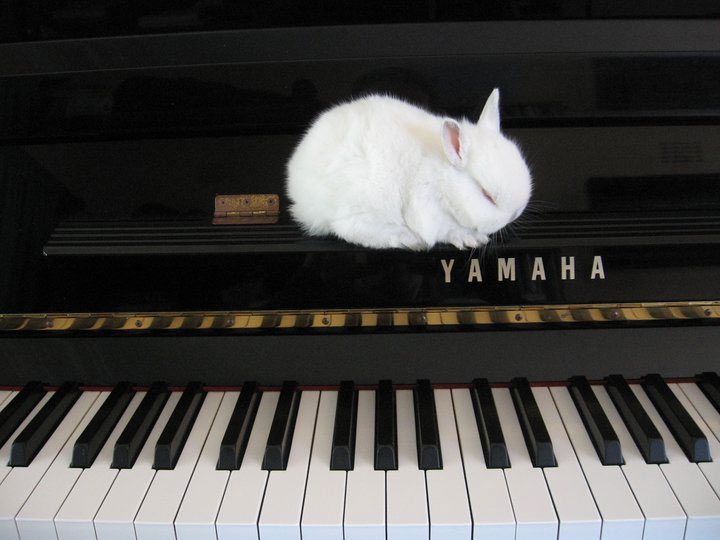The first class of the day was run by Abe Cytrynowski on scales, and how to avoid your students playing them on automatic pilot (playing with a vacant mind).
He said to firstly draw them in with a theoretic hook ie the key signature.
Use visual hooks “Scouts honour” (3 fingers) and a “peace sign” (2 fingers) and use those as block chords on the piano on the groups of 2 and 3 black keys to help the student connect to the scale better.
Abe’s practice methods for scales are as follows:-
- similar motion, but first descending THEN ascending (most mistakes seem to occur on the way down!)
- contrary motion, but from outside back into the centre (most mistakes occur on the way back home again)
- melodic minors: play only the top octave, up and down ie the “U turn” (accent the 4th note and top note so that th erhythm will feel right).
- Practise specific scales in “clusters”
- The Russian Method
- Use a variety of rhythms and accents (to iron out all unevenness)
- Staccato and double staccato on each note (abandoning legato leaves fingers in limbo)
- Start scales on different scale degrees (but use correct fingers – great preparation for modes!)
- Piano on hand, forte the other, and reverse (so the strong fingers of one hand don’t mask the weak fingers of the other)
- Staccato one hand, legato the other, and reverse
- piano ascending, forte descending, and reverse
- metronome work to increase speed, in conjuction with the above methods.
He then went on “For the thrill-seekers!
- 2 notes RH, for every 1 note LH – which plays low in bass (LH playes one octave, RH ends up playing for 2 octaves).
- 3 notes RH for every 1 note LH – which plays low in bass (LH plays one octave, RH ends up playing for 3 octaves).
- 4 notes RH for ever 1 note LH – which plays low in bass (LH plays one octave, RH ends up playing for 4 octaves).
- Cross rhythms – LH plays in twos, RH in threes. LH plays in threes, RH in fours.
- fingers “2-3-4-5” playing the scale, one hand then the other, no thumbs at all (you really have to know the notes!)
- Play different scales in both hands (eg C Major RH, B Major LH – the kids will love the ghastly sound).
And for arpeggios:
- Use many of the above methods.
- LH arpeggio in root position, RH in inversion
- Contrary motion, both hands starting on tonic
- Contrary motion: LH starting on tonic, RH on inversion and vice-versa
- Use “build-on” method to progress through the arpeggio, step by step building up “muscular memory”.
Abe then went on to talk about his Scalecard System. Abe came up with the concept after watching so many students struggle with scales. His website describes them as follows:-
The Scalecard System ™ offers a new approach to the learning and revision of technical work for examination purposes.
The system comprises a full set of scale and arpeggio cards for both AMEB and ANZCA examination systems. The front of each Scalecard indicates the Grade level, and the technical item required (eg. D major, hands separately & together, 2 octaves).
On the back of the card, the same scale or arpeggio is presented in musical notation, with all the fingering clearly indicated. In addition, the scale or arpeggio is written in alphabetic lettering at the bottom of each card. Compass, touch and tempo requirements are also detailed on separate cards within each set.
To learn more about Abe’s Scalecard system, click here: Abe Crytrynowski’s Scalecards System
